

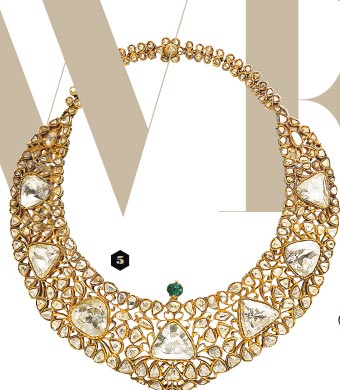

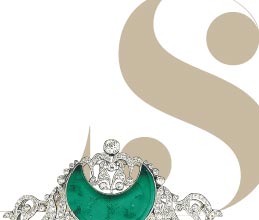
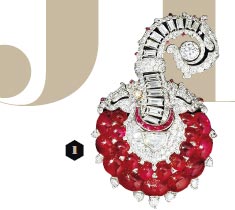
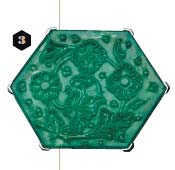

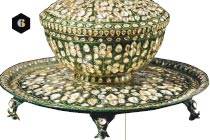

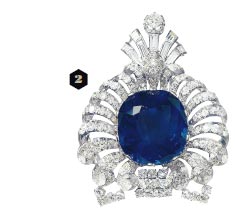
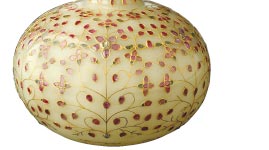
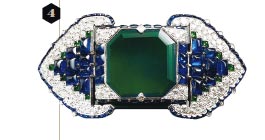
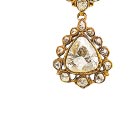
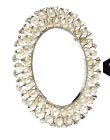
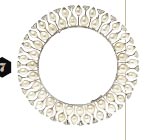




![[2016 Fall Special Exhibition]
JEWELS OF
THE MUGHAL EMPERORS AND
MAHARAJAS
The Al Thani Collection
Saturday, October 1 to Sunday, December 11, 2016 [2016 Fall Special Exhibition]
JEWELS OF
THE MUGHAL EMPERORS AND
MAHARAJAS
The Al Thani Collection
Saturday, October 1 to Sunday, December 11, 2016](image/02_24.gif)
having been surrounded by jewels and various forms of art from a
young age. They were also knowledgeable in the arts not only of
India but China, Persia, and distant Europe and commissioned various
types of jewelry. They favored jade and crystal carvings and gold
vessels inlaid with diamonds, rubies, emeralds, and pearls. Diamonds
were especially prominent in their collection as India was the only
producing country until the eighteenth century. Many famous
diamonds, including the world’s largest cut blue diamond, the Idol’s
Eye will be showcased in this exhibition. In time, as the dominance
of the Mughals waned and the influence of the English rose, the
maharajas throughout India competed against each other to
commission the finest works from the best jewelers in Europe.
In 1928, the Maharaja of Patiala traveled to Paris with some 7571
diamonds, 1432 emeralds, and other gemstones to have jewelry made.
Jacques Cartier (1885–1942) visited India to deepen his ties with
many Indian rulers from whom he purchased precious stones. During
the art deco period, jewelers created many new designs that
reflected a crossover of Indian and European cultures. These styles
continued to grow more refined to this day.
Jewels of the Mughal Emperor and Maharajas presents 181 celebrated pieces from the collection of His Highness Qatari Sheikh Hamad bin Abdullah Al Thani. We hope you will enjoy this dazzling collection, which will be shown in Japan for the first time.
Jewels of the Mughal Emperor and Maharajas presents 181 celebrated pieces from the collection of His Highness Qatari Sheikh Hamad bin Abdullah Al Thani. We hope you will enjoy this dazzling collection, which will be shown in Japan for the first time.
Endowed with the natural power that produced them, gemstones have had a long history of cultural significance. For Indian Muslim rulers, emeralds were considered precious, sacred stones that connote the holy land of Allah since the prophet Muhammad favored the color green. In Hindu astrology, gemstones were traditionally believed to have
brought happiness and followers adorned themselves in
traditional jewels
according to social position and status in ceremonies.
This major exhibition traces the history of jewelry from India, which has been a rich source of precious stones, from the sixteenth century to the present. The Mughal Empire, which was founded in the sixteenth century, built the great Taj Mahal. The fourth Mughal emperor Jahangir (r. 1605–1627) and the fifth Shah Jahan (r. 1628–1658) were both extremely wealthy and cultured,
This major exhibition traces the history of jewelry from India, which has been a rich source of precious stones, from the sixteenth century to the present. The Mughal Empire, which was founded in the sixteenth century, built the great Taj Mahal. The fourth Mughal emperor Jahangir (r. 1605–1627) and the fifth Shah Jahan (r. 1628–1658) were both extremely wealthy and cultured,